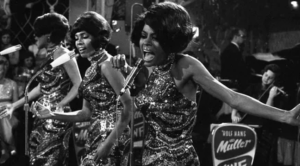
Introduction to “Nothing But Heartaches” by Diana Ross and the Supremes
Diana Ross and the Supremes, one of the most iconic girl groups of the 1960s, delivered a poignant and timeless ballad with “Nothing But Heartaches”. Released in 1964 as the B-side to their hit single “Baby Love,” this track showcases the group’s vocal harmonies and emotional depth.
Background
The song’s lyrics delve into the universal experience of heartbreak and the enduring pain that accompanies it. The Supremes’ soulful rendition captures the raw vulnerability and melancholy associated with a failed relationship. Through their expressive vocals, they convey the depth of sorrow and longing felt by the heartbroken protagonist.
“Nothing But Heartaches” is a classic example of Motown’s signature sound, featuring a lush orchestral arrangement and a driving rhythm section. The song’s melody is both haunting and memorable, evoking a sense of nostalgia and bittersweet longing. The Supremes’ harmonies are particularly striking, blending seamlessly to create a rich and textured sound.
The group’s performance is marked by their emotional intensity and vocal control. Diana Ross, as the lead singer, delivers a powerful and heartfelt rendition, conveying the pain and anguish of the heartbroken narrator. The harmonies of Florence Ballard and Mary Wilson add depth and complexity to the song, enhancing its emotional impact.
“Nothing But Heartaches” was a commercial success, reaching number 2 on the Billboard Hot 100 chart in 1964. The song’s popularity can be attributed to its relatable lyrics, catchy melody, and the Supremes’ captivating performance. It remains a beloved classic, resonating with audiences of all ages.
The song’s enduring appeal lies in its ability to evoke strong emotions and connect with listeners on a deep level. “Nothing But Heartaches” is a testament to the power of music to heal, comfort, and inspire. It serves as a timeless reminder of the enduring nature of love and loss.